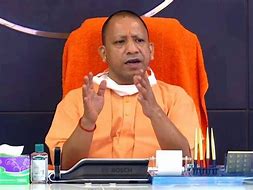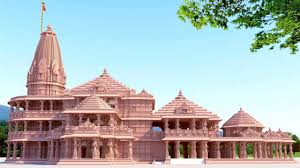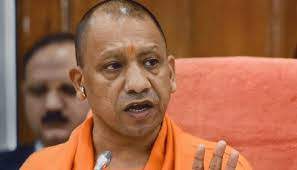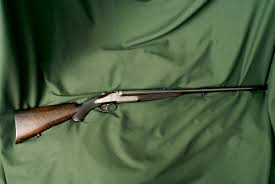Feature
1st woman to be hanged post-independence, who killed 7 members of own family

Shabnam and Salim’s mismatched love story’s bloody tale has come close to hanging. Probably for the first time in the history of independent India, a woman prisoner will be hanged till death for a rare crime she was found guilty of. On the night of April 14, 2008, the hanging house of the Mathura district prison was set to be hanged for the death of Shabnam, who was strangled to death by axe, along with her lover Salim, along with the parents and innocent nephew. Two towers of Manila flanks have been called from Buxar to be hanged. The executioner from Meerut also came to inspect the hanging house last year. However, the date of hanging has not been fixed. If Shabnam is hanged, it will be the first case of independent India.
Shabnam, a resident of Bawankhedi village in the Amroha district of Uttar Pradesh, along with her boyfriend Salim, on the night of April 14, 2008, had strangled seven people, including parents and innocent nephews, to death with an axe. Shabnam has been sentenced to death for the same crime. Shabnam’s mercy petition has also been rejected by the President. In such a situation, she is certain to be hanged. The system of hanging women is in the district jail. The court has not yet fixed the date for hanging Shabnam, but the jail administration has completed its preparations to hang Shabnam.
On March 12, 2020, the jail administration summoned Pawan Kumar Jallad of Meerut to get the hanging house inspected. The executioner had asked to arrange the towing, including the wooden salvage, the lever, the wooden planks and the Manila flange. Jail Superintendent Shailendra Maitreya told that the towing would be one inch in diameter. It will remain 24 feet long. The towing is being sourced from Buxar. The cost of both towing of Manila Sun is 36 hundred rupees. He told that as soon as the date of the hanging of Shabnam from the court is fixed, a trial will be done in the hanging house of the jail. In this, a sack full of soil equal to the weight of Shabnam will be hung on the noose. The jail was built in Mathura district in the year 1866, when a hanging house was built to hang the woman here. No woman has been hanged in this hanging house since independence.
Entertainment
Meghalaya Reserves Legalized Gambling and Sports Betting for Tourists

The State Scores Extra High on Gaming-Friendly Industry Index
Meghalaya scored 92.85 out of 100 possible points in a Gaming Industry Index and proved to be India’s most gaming-friendly state following its recent profound legislation changes over the field allowing land-based and online gaming, including games of chance, under a licensing regime.
The index by the UK India Business Council (UKIBC) uses a scale of 0 to 100 to measure the level of legalisation on gambling and betting achieved by a state based on the scores over a set of seven different games – lottery, horse racing, betting on sports, poker, rummy, casino and fantasy sports
Starting from February last year, Meghalaya became the third state in India’s northeast to legalise gambling and betting after Sikkim and Nagaland. After consultations with the UKIBC, the state proceeded with the adoption of the Meghalaya Regulation of Gaming Act, 2021 and the nullification of the Meghalaya Prevention of Gambling Act, 1970. Subsequently in December, the Meghalaya Regulation of Gaming Rules, 2021 were notified and came into force.
All for the Tourists
The move to legalise and license various forms of offline and online betting and gambling in Meghalaya is aimed at boosting tourism and creating jobs, and altogether raising taxation revenues for the northeastern state. At the same time, the opportunities to bet and gamble legally will be reserved only for tourists and visitors.
“We came out with a Gaming Act and subsequently framed the Regulation of Gaming Rules, 2021. The government will accordingly issue licenses to operate games of skill and chance, both online and offline,” said James P. K. Sangma, Meghalaya State Law and Taxation Minister speaking in the capital city of Shillong. “But the legalized gambling and gaming will only be for tourists and not residents of Meghalaya,” he continued.
To be allowed to play, tourists and people visiting the state for work or business purposes will have to prove their non-resident status by presenting appropriate documents, in a process similar to a bank KYC (Know Your Customer) procedure.
Meghalaya Reaches Out to a Vast Market
With 140 millions of people in India estimated to bet regularly on sports, and a total of 370 million desi bettors around prominent sporting events, as per data from one of the latest reports by Esse N Videri, Meghalaya is set to reach out and take a piece of a vast market.
Estimates on the financial value of India’s sports betting market, combined across all types of offline channels and online sports and cricket predictions and betting platforms, speak about amounts between $130 and $150 billion (roughly between ₹9.7 and ₹11.5 lakh crore).
Andhra Pradesh, Telangana and Delhi are shown to deliver the highest number of bettors and Meghalaya can count on substantial tourists flow from their betting circles. The sports betting communities of Karnataka, Maharashtra, Uttar Pradesh and Haryana are also not to be underestimated.
Among the sports, cricket is most popular, registering 68 percent of the total bet count analyzed by Esse N Videri. Football takes second position with 11 percent of the bets, followed by betting on FIFA at 7 percent and on eCricket at 5 percent. The last position in the Top 5 of popular sports for betting in India is taken by tennis with 3 percent of the bet count.
Local Citizens will Still have Their Teer Betting
Meghalaya residents will still be permitted to participate in teer betting over arrow-shooting results. Teer is a traditional method of gambling, somewhat similar to a lottery draw, and held under the rules of the Meghalaya Regulation of the Game of Arrow Shooting and the Sale of Teer Tickets Act, 2018.
Teer includes bettors wagering on the number of arrows that reach the target which is placed about 50 meters away from a team of 20 archers positioned in a semicircle.
The archers shoot volleys of arrows at the target for ten minutes, and players place their bets choosing a number between 0 and 99 trying to guess the last two digits of the number of arrows that successfully pierce the target.
If, for example, the number of hits is 256, anyone who has bet on 56 wins an amount eight times bigger than their wager.























